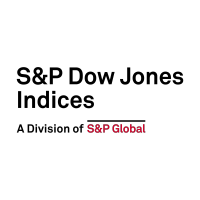Tag Archives: momentum
S&P Momentum Indices Leading the Pack
Momentum strategies, which tend to thrive in trending markets, have recently delivered strong performance due to continued economic strength and positive market sentiment. In the past 12 months, the S&P 500® Momentum Index posted notable outperformance compared with some other S&P 500 factors, as well as the S&P 500 itself (see Exhibit 1). In this…
- Categories Factors
- Other Tags
Financial Planning Using Indices: From Taxes to Factors
How are advisors putting SPIVA data and factors to work as they build long-term plans to help clients achieve objectives? Delta Wealth Advisors’ Dino Efthimiou and Niko Finnigan join S&P DJI’s Brent Kopp for a practical look at the importance of tax management and the role of indexing in building a comprehensive plan for clients….
- Categories Factors
- Other Tags
An Elevating Effect on Equal Weight?
The trouncing of smaller caps by mega-cap stocks has been one of the hallmark market themes of this year, with the S&P 500® Top 50 outpacing the S&P SmallCap 600® by 30% YTD.1 As a result of its inherent small-cap bias, the S&P 500 Equal Weight Index (EWI) has suffered accordingly, underperforming the S&P 500…
- Categories Equities
- Other Tags
- Categories
- Equities
- Other Tags
Investigating the Premium Available to Factor Returns via a Focus on Sustainability
Factor indices aim to provide investors the means to access factor exposure in a cost-effective and transparent way. S&P DJI offers sustainability versions of factor indices that incorporate environmental, social and governance (ESG) scores, which allow investors to align their investments with their interests while seeking to improve risk/return dynamics. Launched in 2021, our suite…
- Categories Factors
- Other Tags
Why Multi-Factor Indices in South Africa?
Burton Malkiel, author of the book A Random Walk Down Wall Street, asserted, “The facts suggest that successful market timing is extraordinarily difficult to achieve.”1 Multi-factor indices may be a way of ensuring you are “in the right place at the right time,” participating throughout market cycles without compromising timing or returns. The S&P DJI…
- Categories Factors
- Other Tags
Introducing the S&P SmallCap 600 QVML Top 90% Multi-Factor Index
For market participants seeking to measure small-cap, multi-factor equity premia with greater diversification and historically lower tracking error (TE), S&P DJI has recently launched the S&P SmallCap 600® Quality, Value, Momentum and Low Volatility (QVML) Top 90% Multi-Factor Index. In this blog, we will examine the index construction methodology, historic performance, sector composition and factor…
- Categories Factors
- Other Tags
The Same, Only Different
In the first quarter of 2023, the best performing of the 17 factor indices featured in our monthly factor dashboard was S&P 500® High Beta (up 12.5%), while the worst performer was S&P 500 Momentum (-3.2%). This may seem odd at first blush, since both indices are, in some sense, performance chasers—Momentum in absolute and…
Momentum’s Mystique
I confess some superhero powers underwhelm me (really, Hawkeye, arrows?) or stretch credulity further than Hulk’s hyper-elastic jeans. However, one I can appreciate is Mystique, the shape-shifting mutant who constantly alters her appearance to stay one step ahead. If factors were superheroes, I’d argue the S&P 500® Momentum Index (“Momentum”) and Mystique share commonalities, both…
- Categories Factors
- Other Tags
S&P QVM Top 90% Indices: An Examination of the June 2022 Rebalance
This blog is the second in the quarterly blog series we recently introduced to provide transparency into rebalance adds and drops for our S&P Quality, Value & Momentum Top 90% Multi-factor Indices (S&P QVM Top 90% Indices). The S&P QVM Top 90% Indices seek to track constituents in the top 90% of their universe, ranked…
- Categories Factors
- Other Tags
- Categories
- Factors
- Other Tags
Finding a Factor Fit
How can three decades of factor index performance history help investors make more informed decisions and measure the effectiveness of active managers? Join S&P DJI’s Craig Lazzara and Anu Ganti for a closer look at factor performance across a range of market environments. Learn more: https://www.spglobal.com/spdji/en/research/article/factor-indices-a-simple-compendium/
- Categories Factors
-
Other Tags
2022, Active, Active vs. Passive, alternate beta, alternative beta, Anu Ganti, beta, Core Factor PM, Core Factors, Craig Lazzara, dividend growth, Factor, high beta, Index Investment Strategy, low volatility, Passive, quality, risk management, Risk Premia, S&P 500 Factors, S&P Dow Jones Indices, SPIVA, U.S. Equities
- Categories
- Factors
- Other Tags
- 2022, Active, Active vs. Passive, alternate beta, alternative beta, Anu Ganti, beta, Core Factor PM, Core Factors, Craig Lazzara, dividend growth, Factor, high beta, Index Investment Strategy, low volatility, Passive, quality, risk management, Risk Premia, S&P 500 Factors, S&P Dow Jones Indices, SPIVA, U.S. Equities














































